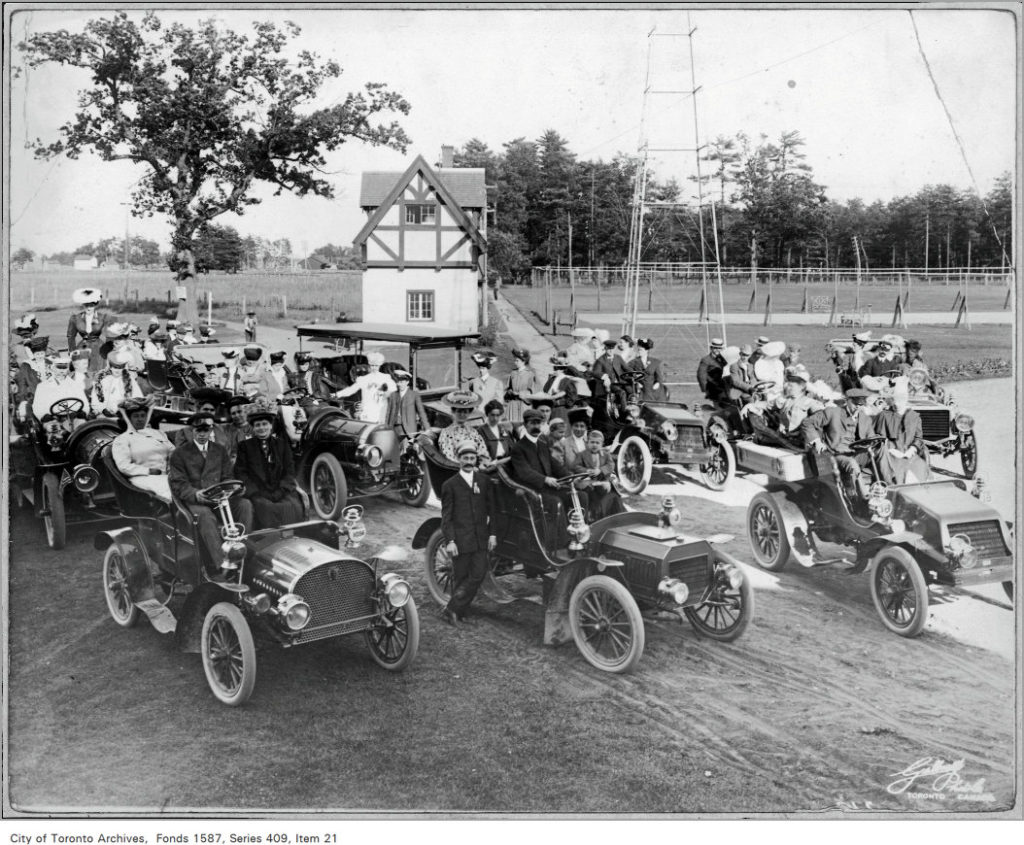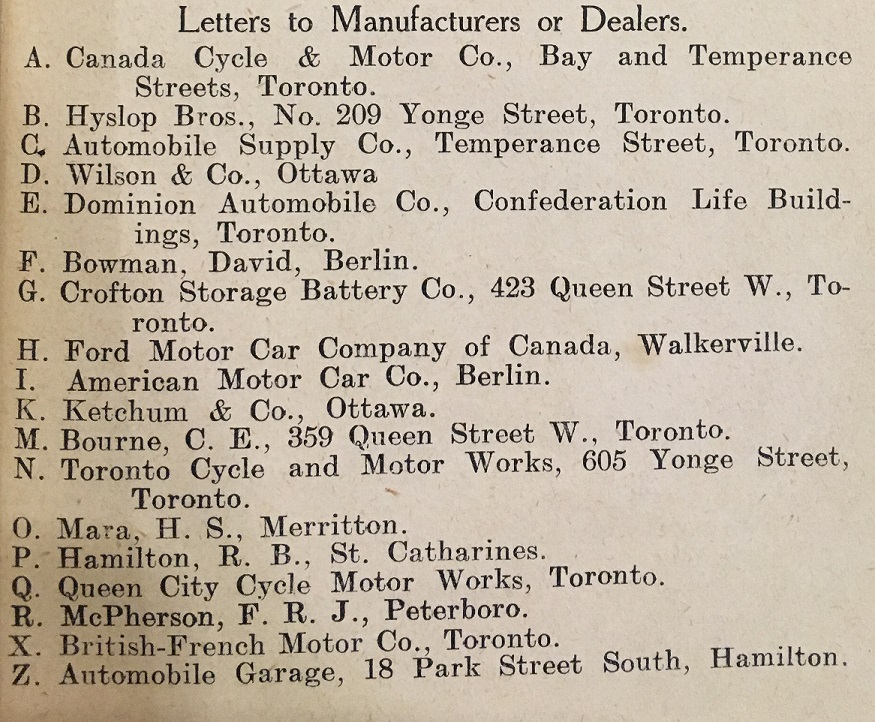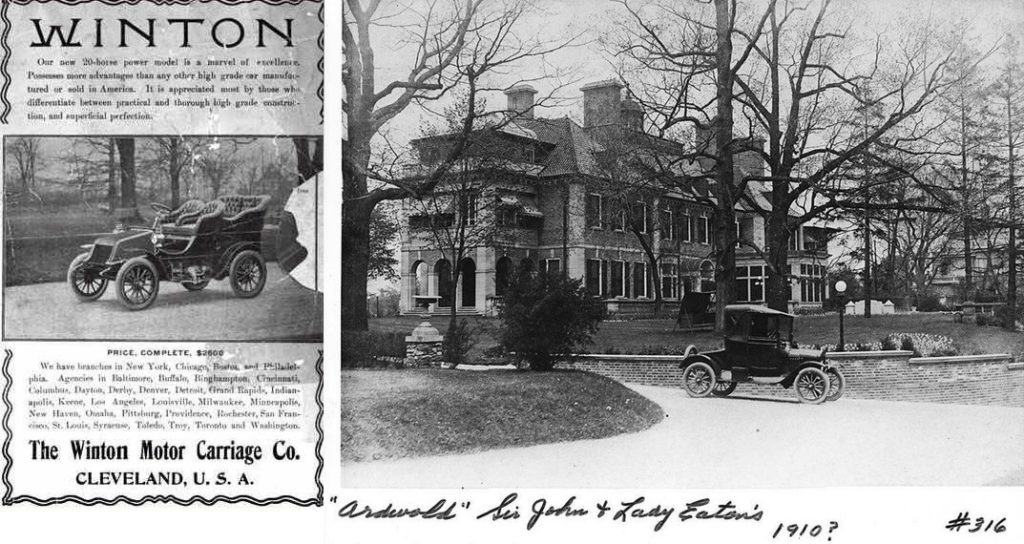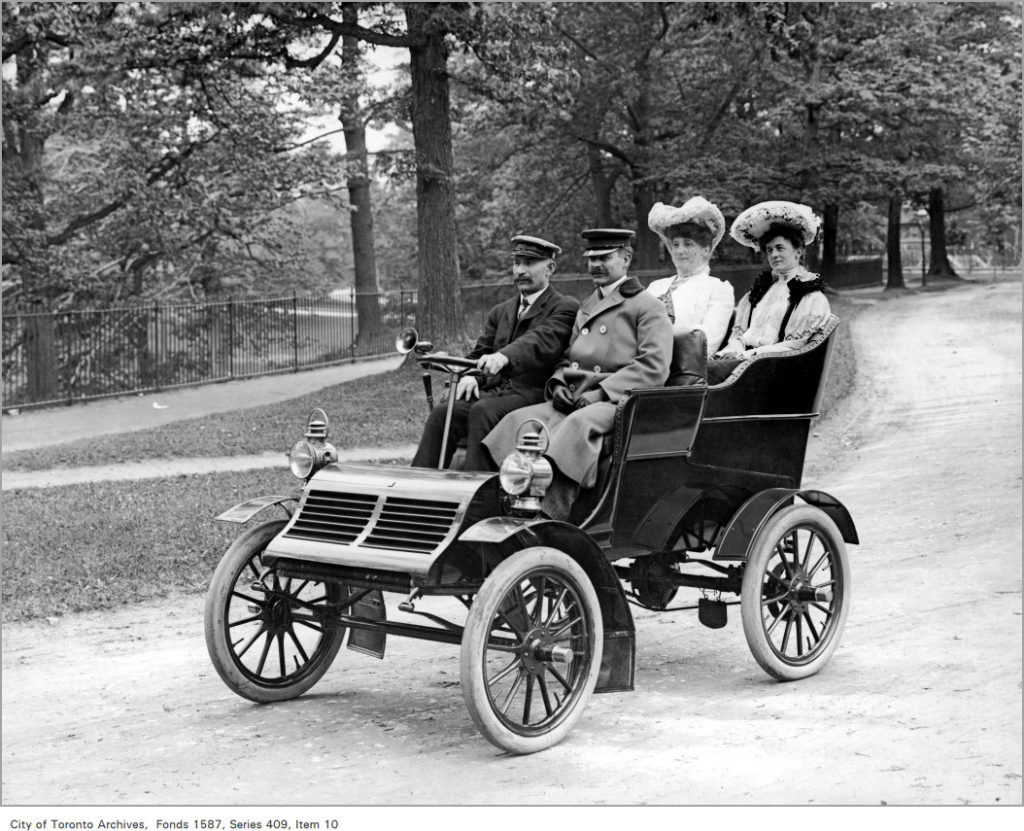Skip to:
Ontario was the first province in Canada that passed a law in 1903 that required motorists to pay $2 for a leather licence shield adorned with aluminum numbers. They were designed by a member of the Hamilton Auto Club, and manufactured by a Toronto-based harness maker. John C. Eaton bought the first two — one for his 1903 Winton (likely pictured above), and the second for his National electric vehicle.
Dr. Perry Doolittle, who would later found CAA, bought the third of what would eventually be 178 plates issued that year. The fourth plate, issued to Howard Chandler still exists today and is held by his descendants. Only two types of plates were made: passenger and dealer. As of this writing only a handful are known to survive – 12 passenger plates and one lone dealer plate.
In terms of construction, numerals are riveted on and are cast aluminum, however the rivets do not show on the front of the numerals (which is a tell-tail sign of a fake). The aluminum oval disc is also riveted in the same manner although the rivets are visible on the front. Visitors from outside Ontario were issued leather plates at the border. These were issued in the 1000 block series. It is unknown if the plate sized differed due to the four-digit configuration.

Passenger Plates Known: 12
[table id=1 /]

To date, only one surviving leather dealer plate has been found. Dealers were assigned letters in alphabetical order on a first come first served basis. With the recent find of dealer plate “F”, it is now confirmed that dealer plates were made in the same fashion as the passenger plates, however the dimensions were different. The overall width of the plate was narrower, similar to the Ministry replica made in the 1920s from spare parts (see replica section below). In addition, the oval disc script reads “EXEMPT FROM PROVINCIAL LICENSE” as dealers did not have to pay licensing fees.
Dealer Plates Known: 1
[table id=11 /]

Listed below are all the known replica leather plates to help novice collectors avoid a potential costly mistake. By no means are the replica plate sections below and on subsequent pages meant to “out” collectors – it is simply a registry. For example, I owned fake #80 leather in my collection for over 15 years.
Replica Plates Known: 24
[table id=2 /]


